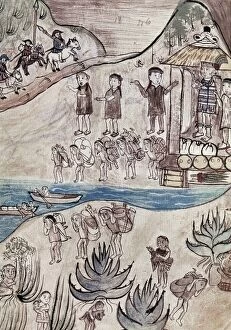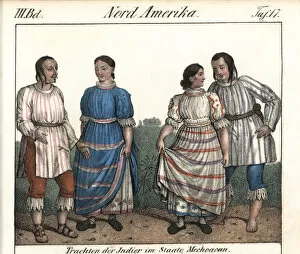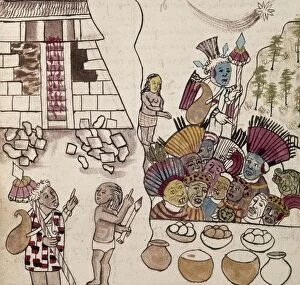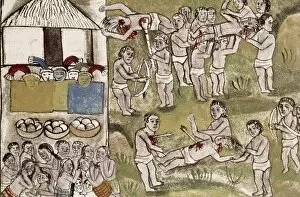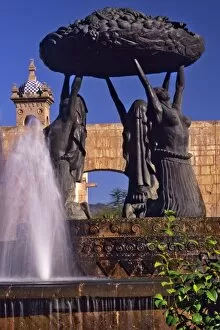Tarascan Collection
Amidst the lush landscapes of Michoacan, Mexico, around 1500, the Purepecha (Tarascan) Indians lived in harmony with nature
For sale as Licensed Images
Choose your image, Select your licence and Download the media
Amidst the lush landscapes of Michoacan, Mexico, around 1500, the Purepecha (Tarascan) Indians lived in harmony with nature. Their culture, rich in rituals and traditions, was about to face an unprecedented challenge with the arrival of Spanish conquistadors. In this illustration, we see a group villagers hastily fleeing their homes, their faces etched with fear and uncertainty. The Tarascan civilization was known for its intricate art, as evidenced by this effigy vessel depicting a dog wearing a mask in the form of a human face. This artistry extended to their religious practices, as seen in the stone Chac mool from Tzintzuntzan, which represents a deity associated with fertility and sustenance. Despite the beauty of their culture, the Tarascan people were not immune to conflict. This late 19th-century depiction of straw cottages in Salamanca shows the simplicity of their dwellings, while the intricately designed Tarascan costumes hint at the complexity of their society. The Tarascan priesthood held significant power in their community, as seen in this image priests performing ceremonies. Warfare was also a part of their society, as evidenced by this depiction warriors in battle. In the heart of Michoacan's capital, Morelia, stands the Tarascan Fountain, a testament to the resilience and creativity of the Tarascan people. The fountain features Tarascan women, their faces adorned with the traditional headdresses, symbolizing the strength and grace of this ancient civilization.

